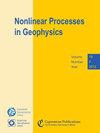气候分析中两种因果关系方法的比较
IF 2.4
4区 地球科学
Q3 GEOSCIENCES, MULTIDISCIPLINARY
引用次数: 0
摘要
摘要相关性并不一定意味着因果关系,因此,人们开发了因果关系方法,试图从虚假关系中分离出真正的因果联系。在我们的研究中,我们使用了两种因果关系方法,即梁-克里曼信息流(LKIF)和彼得与克拉克矩条件独立性(PCMCI)算法,并将它们应用于四个复杂程度不断增加的不同人工模型和一个基于大西洋和太平洋地区气候指数的实际案例研究。我们的研究表明,这两种方法都优于经典的相关分析方法,尤其是在去除虚假联系方面。对于三个最简单的模型,LKIF 和 PCMCI 都显示出一定的优缺点,LKIF 在变量数量较少时表现较好,而 PCMCI 在变量数量较多时表现最佳。从第四个模型中检测因果联系更具挑战性,因为系统是非线性和混沌的。对于气候指数的实际案例研究,两种方法在月度时间尺度上既有相似之处,也有不同之处。其中一个主要区别是,LKIF 将北极涛动(AO)确定为最大的驱动因素,而厄尔尼诺-南方涛动(ENSO)则是 PCMCI 的主要影响变量。需要进行更多的研究来确认这些联系,特别是采用非线性因果方法。本文章由计算机程序翻译,如有差异,请以英文原文为准。
A comparison of two causal methods in the context of climate analyses
Abstract. Correlation does not necessarily imply causation, and this is why causal methods have been developed to try to disentangle true causal links from spurious relationships. In our study, we use two causal methods, namely, the Liang–Kleeman information flow (LKIF) and the Peter and Clark momentary conditional independence (PCMCI) algorithm, and we apply them to four different artificial models of increasing complexity and one real-world case study based on climate indices in the Atlantic and Pacific regions. We show that both methods are superior to the classical correlation analysis, especially in removing spurious links. LKIF and PCMCI display some strengths and weaknesses for the three simplest models, with LKIF performing better with a smaller number of variables and with PCMCI being best with a larger number of variables. Detecting causal links from the fourth model is more challenging as the system is nonlinear and chaotic. For the real-world case study with climate indices, both methods present some similarities and differences at monthly timescale. One of the key differences is that LKIF identifies the Arctic Oscillation (AO) as the largest driver, while the El Niño–Southern Oscillation (ENSO) is the main influencing variable for PCMCI. More research is needed to confirm these links, in particular including nonlinear causal methods.
求助全文
通过发布文献求助,成功后即可免费获取论文全文。
去求助
来源期刊

Nonlinear Processes in Geophysics
地学-地球化学与地球物理
CiteScore
4.00
自引率
0.00%
发文量
21
审稿时长
6-12 weeks
期刊介绍:
Nonlinear Processes in Geophysics (NPG) is an international, inter-/trans-disciplinary, non-profit journal devoted to breaking the deadlocks often faced by standard approaches in Earth and space sciences. It therefore solicits disruptive and innovative concepts and methodologies, as well as original applications of these to address the ubiquitous complexity in geoscience systems, and in interacting social and biological systems. Such systems are nonlinear, with responses strongly non-proportional to perturbations, and show an associated extreme variability across scales.
 求助内容:
求助内容: 应助结果提醒方式:
应助结果提醒方式:


